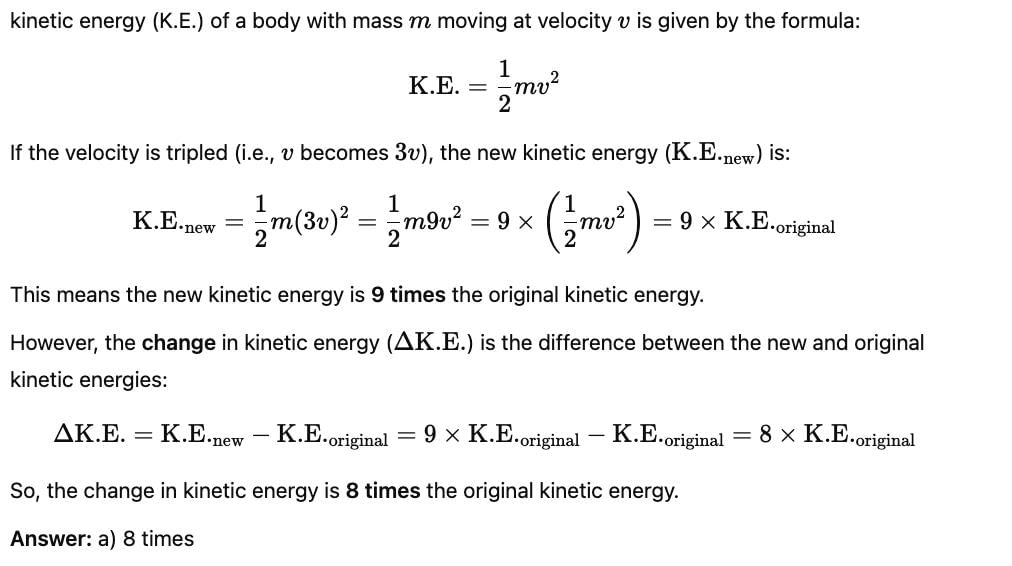MCQ : Work And Energy - 2 - UPSC MCQ
15 Questions MCQ Test Old & New NCERTs for IAS Preparation (Must Read) - MCQ : Work And Energy - 2
On tripling the speed of motion of a body, the change in K.E. is:
The moon revolves around the earth due to the gravitational force (F) of the earth on the moon. The work done by the gravitational force is (r = radius of the circular orbit of moon):
| 1 Crore+ students have signed up on EduRev. Have you? Download the App |
A body is moved through a distance of 3 m in the following different ways. In which case is the maximum work done?
Two bodies of equal weight are kept at heights of h and 1.5 h, respectively. The ratio of their potential energies is:
If a force of F newton moves a body with constant speed v, the power delivered by it is:
A mass ‘m’ falls from a height ‘h’ any point on its path the total energy is:
If the bulbs of 60 W and 40 W are connected in series to a 220 V source the bulb which glows brighter is:
A porter with a suitcase on his head is climbing up a flight of stairs with a uniform speed. The work done by the ‘weight of the suitcase’ on the suitcase is:
Two bodies of unequal masses are dropped from a cliff. At any instant, they have equal:
Two masses m and 2m are dropped from a certain height ‘h’. Then on reaching the ground:
In the case of negative work, the angle between the force and displacement is:
One unit of electricity is consumed by,
A: P = 40 W bulb used for t = 25 hours
B: P = 20 W bulb used for t = 50 hours
Both A and B are true as, energy E in kWh is best related as:
|
3 videos|643 docs|564 tests
|
|
3 videos|643 docs|564 tests
|


















